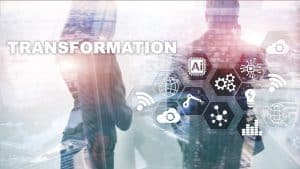
The lessons learned in 2020 serve as critical components of this year’s and future digital transformation strategies and investments.
In January 2020, I discussed my predictions for the year across various components of an enterprise digital transformation. Since then, the world has experienced a pandemic that drastically changed how we live and how businesses operate. The need to accelerate digital transformation plans became urgent and imperative, and much of what we thought would happen tomorrow is now happening as we speak. According to 2020 research, 63% of IT leaders have accelerated or maintained digital transformation initiatives during COVID-19, while 37% slowed down their digital spending. 2020 was a time of persistent disruption, and its rapid-fire changes required an equally rapid-fire ability to adapt. With that in mind, let’s take a look back at what I thought would take place and how the way the year unfolded will dictate the course of 2021.
See also: AIOps Gaining Traction as Technology Accelerator
Autonomous digital enterprise
I initially predicted that as businesses progressed toward becoming autonomous digital enterprises through tech innovations in areas like AIOps and edge computing, they would need to focus on actionability instead of monitoring and observability. While I thought this adjustment in priorities would be a gradual shift, the rapidly evolving global landscape due to the pandemic made actionable insights through automated tools and processes a necessity immediately. Companies that were further along in their automated tech implementations were better prepared to adjust their goals, strategies, and investments in real-time as the pandemic took its toll on workforces, supply chains, and bottom lines globally. Those enterprises who found themselves in a rush to implement and maximize the value of automated tools fell behind their competitors and could not effectively address the pandemic’s unpredictable impacts.
![Featured Resource: Observability with AIOps For Dummies [Download Now]](https://no-cache.hubspot.com/cta/default/8019034/d0413c26-95d1-4dc7-a112-192c3e372de0.png)
In 2021, I predict a rebound for enterprises as many realize and utilize the value of automation to deliver actionable insights to guide real-time and long-term strategies. While these technologies were always destined to have long-lasting implications for digital transformation, their effects will be felt more quickly and globally because capabilities are increasing, becoming more significant and measurable as they support things like predictive analytics to deliver better outcomes. The pandemic’s course is still unpredictable, and there is little doubt businesses worldwide will continue to face adversity. Still, the lessons learned in 2020 heightened the focus on automated, actionable insights to enable those companies to efficiently and effectively execute strategies no matter the circumstance.
Starting on the path to becoming an autonomous digital enterprise does not portend that people become less critical to your operation. Instead, the increased use of AI, ML, and automation minimizes manual effort in operations. Additionally, it becomes about more than simply additional insight from the data analysis, but increasingly about actionability – and being able to take automated actions where possible.
Edge computing and IoT solutions
Previously, I predicted partnerships would prove to be the pathway to realizing value from edge computing and IoT solutions. I thought that by using seamlessly integrated, multi-vendor, commercial off-the-shelf solutions, enterprises would experience more success than they would with single-vendor niche products. With most enterprises turning to remote workforces in 2020 and international collaboration critical to winning in the new normal, this prediction holds and I believe will be at the crux of transformations in 2021.
The amount of edge computing and IoT solutions that flooded the market in 2020 may have been a bit overwhelming for enterprises that weren’t prepared to operate remotely and needed to select the solution best suited for their global needs. However, partnerships across the network and data management ecosystem have produced services like data center aggregators that can empower regional execution against global strategies. Next year will see use cases for edge computing and integrated IoT solutions rise dramatically and pave the way for more expansive adoption across global enterprises.
ITSM and AIOps: Enabling digital transformation
In early 2020, I predicted the year would see CIOs rely on AI to obtain a comprehensive view of the IT landscape and break down the silos across departments. Now, operations teams are using 11 different monitoring tools on average, which has caused overlaps in capabilities, promoted overspending, and created higher maintenance costs. Heading into 2020, I also predicted that the expansion in the number of on-premises and public cloud workloads, and increased application complexity, would drive increased investments in AIOps that ultimately lead to better business outcomes. 2020 accelerated an inevitable evolution that puts IT – and critical process enablers like ITSM and ITOM – at the center of business innovation and success. As IT environments have exceeded human scale and transforming siloed data into actionable insights for faster decision-making has become a top priority, CIOs and their enterprises have attempted to implement AIOps to address those challenges in an intelligent and automated fashion.
In the upcoming months and years ahead, we’ll see demand for AIOps continue to grow, as it can address and anticipate certain unexpected scenarios using AI, ML, and predictive analytics. The increasing complexity of digital enterprise applications spanning hybrid on-premise and cloud infrastructures coupled with the adoption of modern application architectures such as containerization will result in an unprecedented increase in both the volume and complexity of data. While data overload from modern digital environments can delay repair and overwhelm IT Ops teams, noisy datasets will be a barrier of the past as smarter strategies and centralized AIOps systems help organizations improve the customer experience, deliver on modern application assurance and optimization, and tie it to intelligent automation. To this effect, conventional IT Operations approaches may no longer be feasible – making the adoption of AIOps inevitable to be able to scale resources and effectively manage modern environments.
As I mentioned earlier, not every enterprise was prepared for mass AI/ML adoption, and tech evolution in the 2020s will enable a rebound for many of those enterprises. The pandemic caused an explosion in AI-powered —and AI- and IoT-driven—smart devices. Gone are the days when IT’s impact was limited to internal service functions- in 2021, innovations in tools like AutoML will allow enterprises to not only catch-up to their competitors but leapfrog them due to the exponential increase in AI/ML use cases. The ease at which these tools can now be implemented and utilized will also allow workforces to be quickly up-skilled to spark innovation and drive meaningful business outcomes.
The lessons learned in 2020 will serve as critical components of this year’s and future strategies and investments, with automated technologies and operations at the forefront of priorities for enterprises looking to rebound and drive continued innovation reflected in bottom lines.
![Featured Resource: Observability with AIOps For Dummies [Download Now]](https://no-cache.hubspot.com/cta/default/8019034/d0413c26-95d1-4dc7-a112-192c3e372de0.png)






